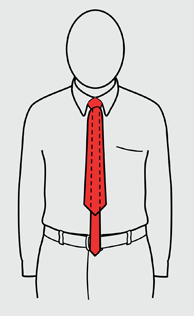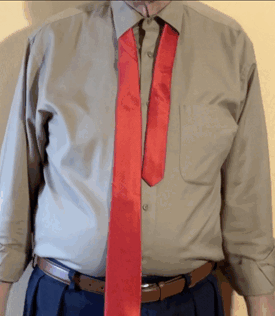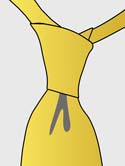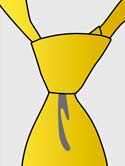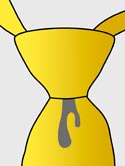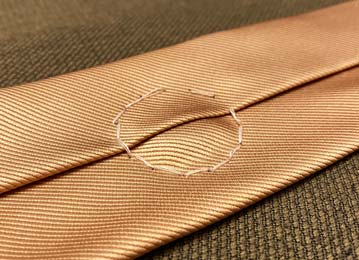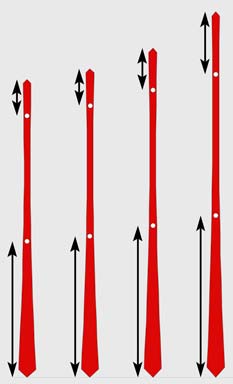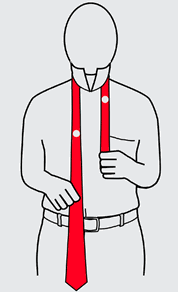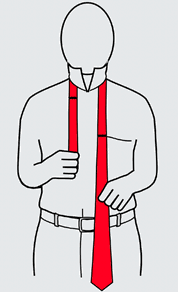Quicktie
Quicktie
Magnetic necktie
This is a simple, time-saving solution for a long-standing problem, having to tie and retie neckties to get the lengths right. The “Quicktie” ties with the first try.
What affects the appearance of a necktie?
- The overall length.
- The wearer’s height.
- The wearer’s neck size.
- The amount of material in the knot.
- The lengths of the blade and tail, measured from cross-over point.
| 7″ used in knot | 10″ used in knot | 12″ used in knot |
Notice the 5-inch difference in various knots.
| Instructions for the wearer:
The necktie must be long enough to provide material for the blade, the tail, to loop around the neck, and to make the knot. Choose a “Quicktie” length approximately shoulder or chin height. “Quickties” can be made in standard 57″, 59″, 63″ and 70” lengths. |
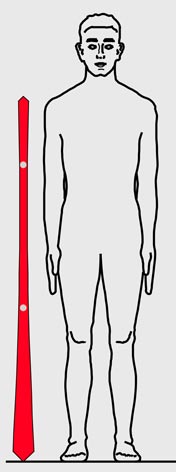 |
Loop the necktie around your neck. Find the magnets by feel through the cloth. Seesaw the ends to match the height of the magnets, and snap the magnets together. The magnets conveniently hold the blade over the tail while starting the knot. To complete the knot, tug on the ends to separate the magnets and slide the knot up on the tail.
Instructions for the manufacturer:
Select magnets that are thick enough to be felt through the fabric, and thin enough to allow the tail to slide through the knot, but strong enough to be magnetically attracted together. Flat coin-shaped magnets work well.
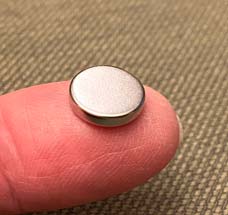 |
Magnet examples: |
|
Sew circular boundaries around both magnets to hold them in place. The stitches on the blade of the tie will be hidden in the knot when tied. The stitches on the tail will be hidden behind the blade. |
Positions for the magnets:
|
Dimensions provided with the license. |
The magnets, hidden on the inside, are not visible on the actual tie. |
Cost cutting:
As a cost-cutting measure, manufacturers can use only one magnet with the companion button being ferrous metal (example: grade 304 stainless steel which is attracted by a magnet, without rusting when dry cleaned).
To further cut cost, plastic shirt buttons can be sewn in, that the wearer finds tactically, by feeling them through the fabric.
|
The cost of the magnets (but not the license fee) can be completely eliminated by creating visible reference marks (using printing, or contrasting stitching) at two places on the necktie (in the same places as the version with magnets). The mark on the blade will be hidden in the knot. To avoid the mark on the tail will be turned to face the shirt. |
 |
The advantages of the “Quicktie” don’t end with the time saved, but also when hanging over a clothes hanger, the magnets attach to form a loop to prevent the heavy end from pulling the tie to the floor.
This patent pending technique is an advertisable feature to boost sales, and may be used by retailers and licensed manufacturers conditional on giving credit in promotional material (including website, ads, and You Tube videos) to Steve Hines. Please call Steve to discuss terms of a license.

